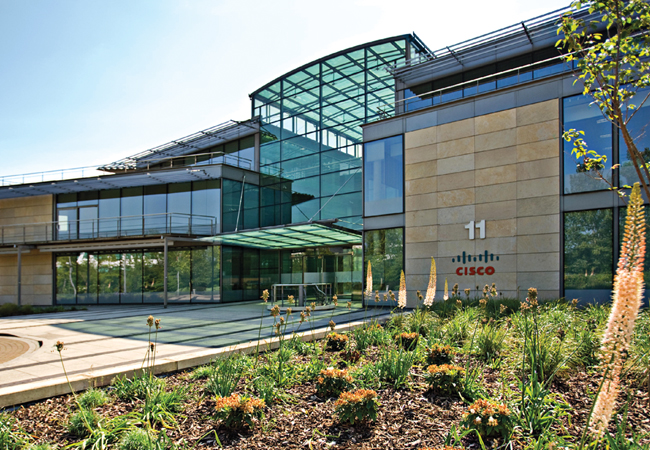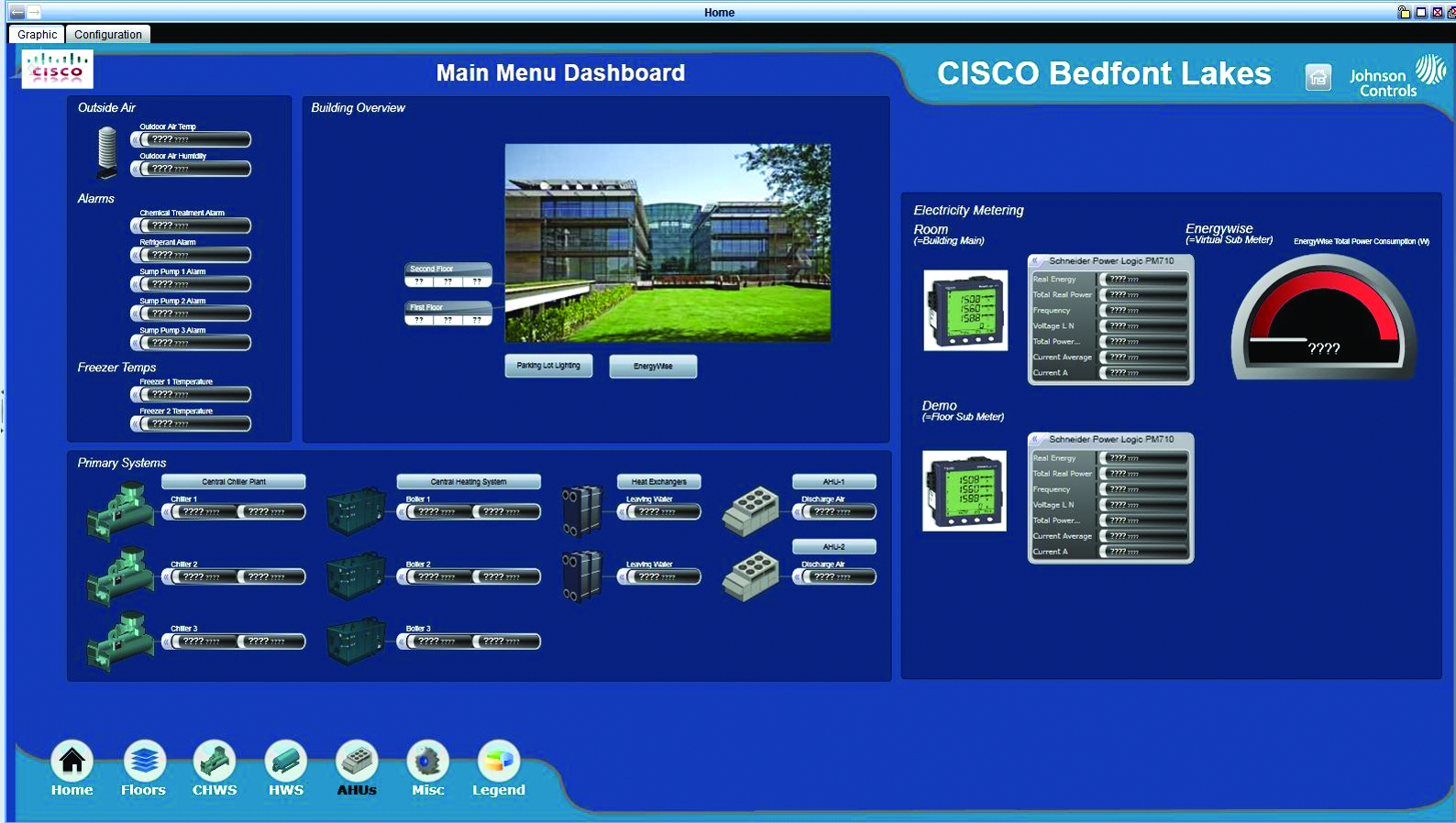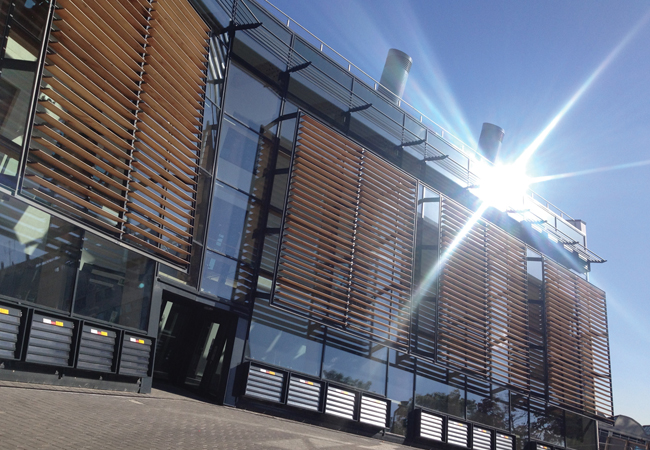
The building services sector is in the midst of a technology revolution. Until now, buildings have often been controlled via proprietary networks – building management systems (BMS) – but with the rise of the internet protocol, building services controls have become increasingly isolated.
By integrating BMS and IT networks, there is the potential to cut the energy used in smarter buildings substantially. HVAC systems can be monitored through a common interface, and can be intelligently linked to lighting and occupancy data to ensure environmental conditioning is provided only when it is needed.
Four years ago, corporate giants Johnson Controls and Cisco – specialising in BMS and IT respectively – signed an agreement to provide converged network systems and services to building owners, operators and tenants. The aim of the alliance is to increase energy efficiency, improve safety and operational performance, maximise real estate value and enable the incorporation of future technologies. Its goal is to enable building operators to view, monitor and control the BMS and IT technologies from a single user interface.
Bedfont Lakes
Cisco’s European headquarters, in Bedfont Lakes, Hounslow, is where the companies focused on merging their networks. After six months of development, Johnson Controls integrated its BMS with Cisco’s IT system, known as the service delivery platform.
The project is part of a global programme for client facilities in San Jose, USA, Bangalore (India), Rolle (Switzerland) and Dubai – the linking of these installations provides the development team with opportunities to test alternative scenarios. The programme includes tying local BMS for energy monitoring and scheduling integration, adding digital signage to the facilities to notify and inform building occupants, and providing IP phone control for conference rooms.
An important element of the integration is the ability to monitor overall and sub-metered energy consumption
At Bedfont Lakes, the project scope included the integration of these solutions into Building 9, an approximately 13,000m2 facility housing office space, a large demonstration centre and laboratories. The system covers 29 conference rooms and includes about 50 IP phones and 25 digital signs.
The BMS portion of the project, including network supervision and control, also involved the installation of 132 electric and thermal meters and a complex lighting-control system using a direct addressable lighting interface (Dali) bridge.
The interface to the Cisco network uses the open protocol oBIX (open Building Information Exchange) with a configured gateway solution by the controls supplier.
The results
BMS is a critical system for Cisco’s operations in Bedfont Lakes. Not only does it monitor and control traditional commercial facility systems providing for occupant safety and comfort, it also manages the HVAC systems that supply cooling to labs at the heart of the company’s solution development and support.
Before the installation of the system, the buildings were operating on an outdated and no longer supportable BMS. The replacement provides a highly supportable BMS platform with available parts, service and a long-term commitment to enhancements and migration.

Johnson has integrated its BMS Metasys with Cisco’s service delivery platform at Cisco’s UK headquarters
Integrated into the new BMS is a lighting-control system – with sensors in each conference room – that adjusts the lights based on a combination of inputs. The system uses Dali and, in addition to the typical control scheme based on occupancy and the momentary light switch in the room, the BMS also receives commands from the IP phone in the room. Lights in each conference room can be set for use in combination with overhead projectors, and can be set to 25%, 50%, 75% and 100% of full brightness.
The lighting-control solution also allows for daylight in the open office areas. During illuminated times, the lighting will be dimmed to meet the room lighting setpoint as outside light becomes more intense, enabling effective daylight integration for that room.
HVAC and thermal energy
The system determines energy consumption associated with the use of hot and chilled water in the HVAC systems. The information is supplied dynamically to the system for early identification of problems and management of energy consumption.
The linked management systems determine the setpoints of the temperature of the conference rooms. When the building is unoccupied, the BMS uses the unoccupied temperature setpoint for the entire building. However, during occupied hours, the setpoint for the conference room is established by the network facilities management system, which informs the BMS of meetings in the room. If a meeting is scheduled, the BMS uses the occupied setpoint and, when no meetings are scheduled, the BMS uses a standby setpoint that allows the BMS to heat or cool the room rapidly should it become occupied.
Energy conservation scheme
An important element of the integration is the ability to monitor overall and sub-metered energy consumption, enabling higher productivity and the potential for energy savings and carbon emission reduction.
All electrical circuits are metered for consumption and fall into one of the three measurable categories: lighting, HVAC and plug load. The facility energy usage is also segregated between office and laboratory areas. To facilitate these measurements, new multi-circuit meters were installed and connected directly to managing systems.
Integration of the building management system with software and services to measure and manage the energy use allows for the measurement and verification of 94% of the building energy consumption. This means the building owner can receive and control data from the IT infrastructure, as well as from the building services, and receive return-on-investment savings projected at £120,000 per year per building. The work is currently being extended to two more buildings.
Johnson Controls and Cisco are striving to offer the same level of integration and energy savings to their customers’ buildings. Given their size and global reach, the potential to reduce energy in buildings across the planet could be significant.
If an IT upgrade was able to involve the overhaul and integration of the BMS, then companies could end up not only with a better integrated IT solution, but also savings in their energy use and reduction in their environmental impact.




